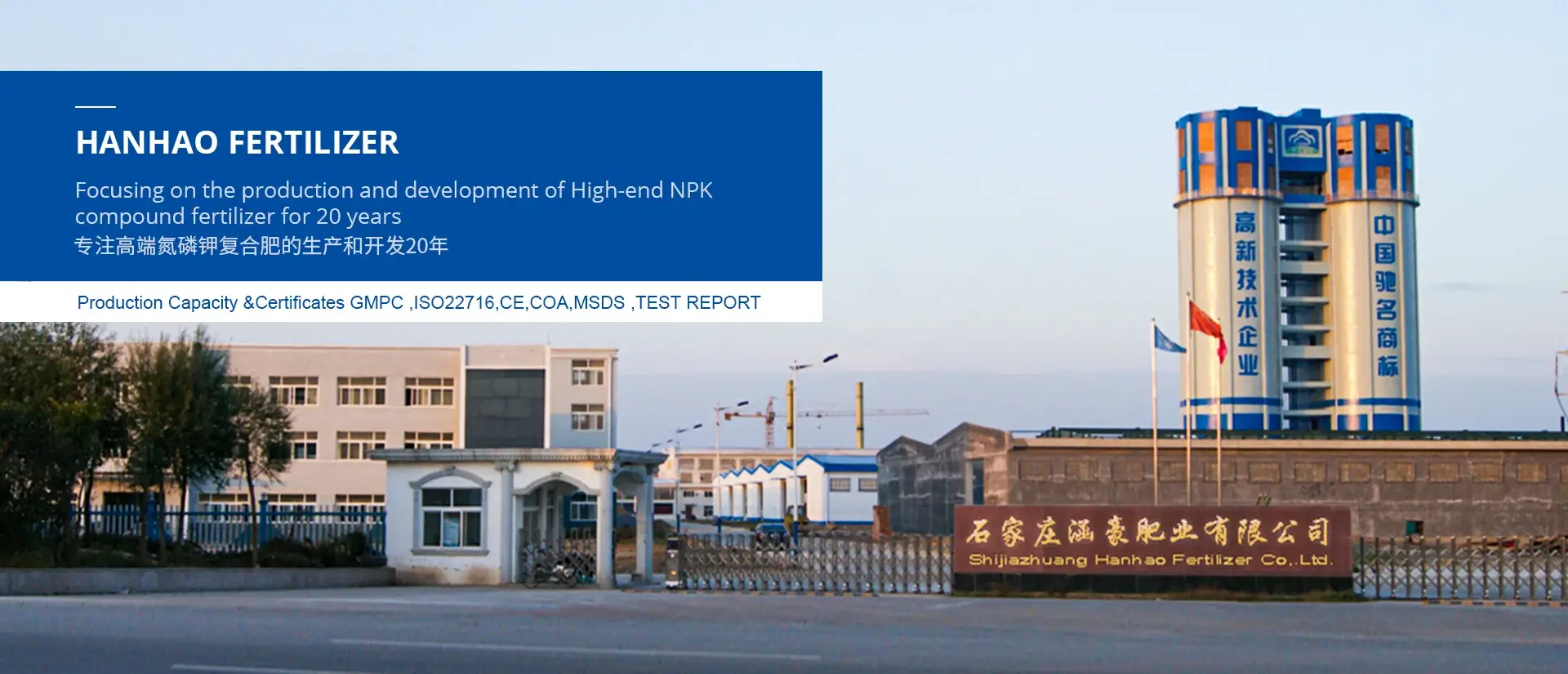
Dec . 13, 2024 14:58 Back to list
15-30-15 fertilizer
Understanding 15-30-15 Fertilizer A Comprehensive Guide
Fertilizers play a crucial role in the world of agriculture and gardening, enabling plants to grow robustly and healthily. Among the myriad types of fertilizers available, the 15-30-15 formulation stands out due to its unique nutrient composition. This article explores the implications and applications of 15-30-15 fertilizer, shedding light on its importance in plant nutrition.
What Does 15-30-15 Mean?
Fertilizer formulations are typically represented by three numbers, such as 15-30-15. These numbers denote the percentage by weight of three essential nutrients nitrogen (N), phosphorus (P), and potassium (K). In the case of 15-30-15 fertilizer, it contains 15% nitrogen, 30% phosphorus, and 15% potassium.
1. Nitrogen (15%) This nutrient is vital for promoting healthy plant growth, as it is a key component of chlorophyll, the green pigment that enables plants to photosynthesize. Nitrogen encourages lush, green foliage and is particularly important during the early stages of plant development.
2. Phosphorus (30%) The high phosphorus content in this formulation makes it particularly beneficial for root development, flower formation, and overall plant energy transfer. Phosphorus is crucial for developing a strong root system and enhancing flowering, making it especially advantageous during the reproductive stages of plant life.
3. Potassium (15%) Potassium is essential for various plant processes, including water regulation, enzyme activation, and photosynthesis. It helps improve resilience against diseases and environmental stressors, making it a vital nutrient for the overall health of plants.
When and How to Use 15-30-15 Fertilizer
Understanding when and how to apply 15-30-15 fertilizer is key to maximizing its benefits
. This formulation is particularly useful during the flowering and fruiting phases of plant growth. It can be applied to a variety of plants, including vegetables, fruits, and ornamental flowers, making it a versatile choice for gardeners.15-30-15 fertilizer

1. Application Timing The best time to use 15-30-15 fertilizer is during the growing season, especially when plants are beginning to bloom. This is when the high phosphorus content can effectively promote flowering and fruiting.
2. Application Method The fertilizer can either be applied as a granular product dispersed around the base of the plants or as a liquid feed. If using granules, it’s essential to water the area thoroughly to help the nutrients penetrate the soil. For liquid applications, mixing the fertilizer with water per the instructions on the package ensures an even distribution of nutrients.
3. Frequency of Application Typically, applying 15-30-15 fertilizer every four to six weeks during the growing season can provide plants with a steady supply of essential nutrients. However, soil testing before application can help determine the actual nutrient needs of the plants, preventing over-fertilization.
Benefits of 15-30-15 Fertilizer
The advantages of using 15-30-15 fertilizer are numerous, particularly for flowering plants and crops that require robust root systems. Here are some of the key benefits
- Enhanced Blooming With its high phosphorus content, this fertilizer encourages more vibrant and abundant flowers. - Improved Root Development The formulation promotes strong root systems, which are critical for overall plant health and stability. - Increased Yield For vegetable and fruit crops, the balanced nutrient profile can lead to a higher yield and better quality produce. - Versatile Use Suitable for various plants, from vegetables to ornamentals, it fits seamlessly into diverse gardening practices.
Conclusion
In conclusion, 15-30-15 fertilizer is an exemplary choice for gardeners and farmers seeking to optimize plant nutrition, especially during critical growth stages. By understanding its components and applications, you can effectively enhance the growth, health, and productivity of your plants. Whether you are growing vibrant flowers or cultivating bountiful crops, incorporating 15-30-15 fertilizer into your gardening routine could lead to remarkable results, making your efforts stand out in the world of horticulture.
-
10 10 10 Fertilizer Organic—Balanced NPK for All Plants
NewsJul.30,2025
-
Premium 10 10 10 Fertilizer Organic for Balanced Plant Growth
NewsJul.29,2025
-
Premium 10 10 10 Fertilizer Organic for Balanced Plant Growth
NewsJul.29,2025
-
Premium 10 10 10 Fertilizer Organic for Balanced Plant Growth
NewsJul.29,2025
-
50 Pound Bags of 13-13-13 Fertilizer for All Plants – Bulk & Organic Options
NewsJul.28,2025
-
High-Efficiency 15-30-15 Granular Fertilizer for Healthy Crops
NewsJul.28,2025
